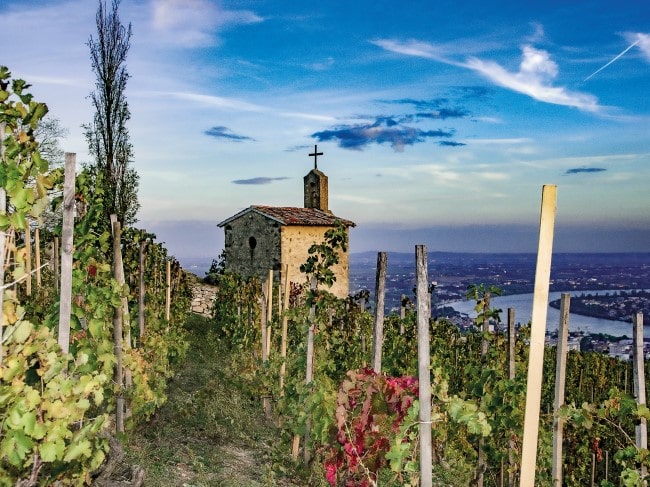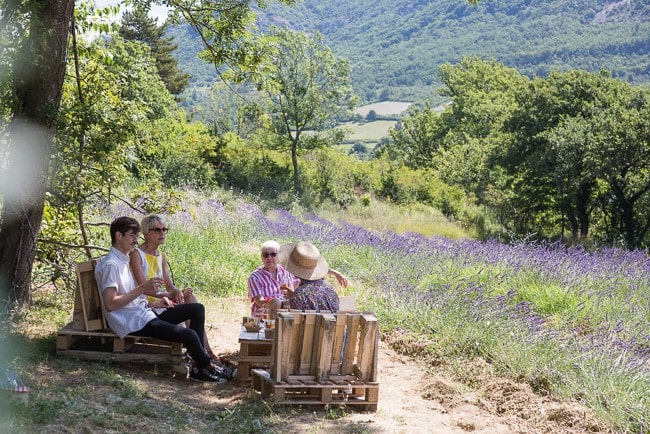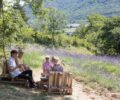Welcome to the Pleasure Drôme
Caroline Mills takes time to explore the exceptional food and drink of the Drôme as part of the new Vallée de la Gastronomie.
“It’s like a cloud,” says Quentin Honnoré as a freshly-made marshmallow melts like velvet in my mouth. I’m watching him spread a soft-peaked mixture onto a slab of marble for the next batch of pink-tinged raspberry Guimauve à l’Ancienne, just one of several confections made by traditional methods by Quentin and his family at Arnaud Soubeyran, the company best known for being the longest-serving manufacturer of the famous Nougat de Montélimar.
Started in 1837 by husband-and-wife team Jean Mathieu Arnaud and Marguerite Clara Soubeyran, the Arnaud Soubeyran nougat brand became synonymous with quality as it attracted ever-greater numbers of sweet-eaters stopping in Montélimar on railway journeys to the south of France. Twenty-something Quentin is the third generation of his family, who bought the farm in the 1970s, to work in the business.
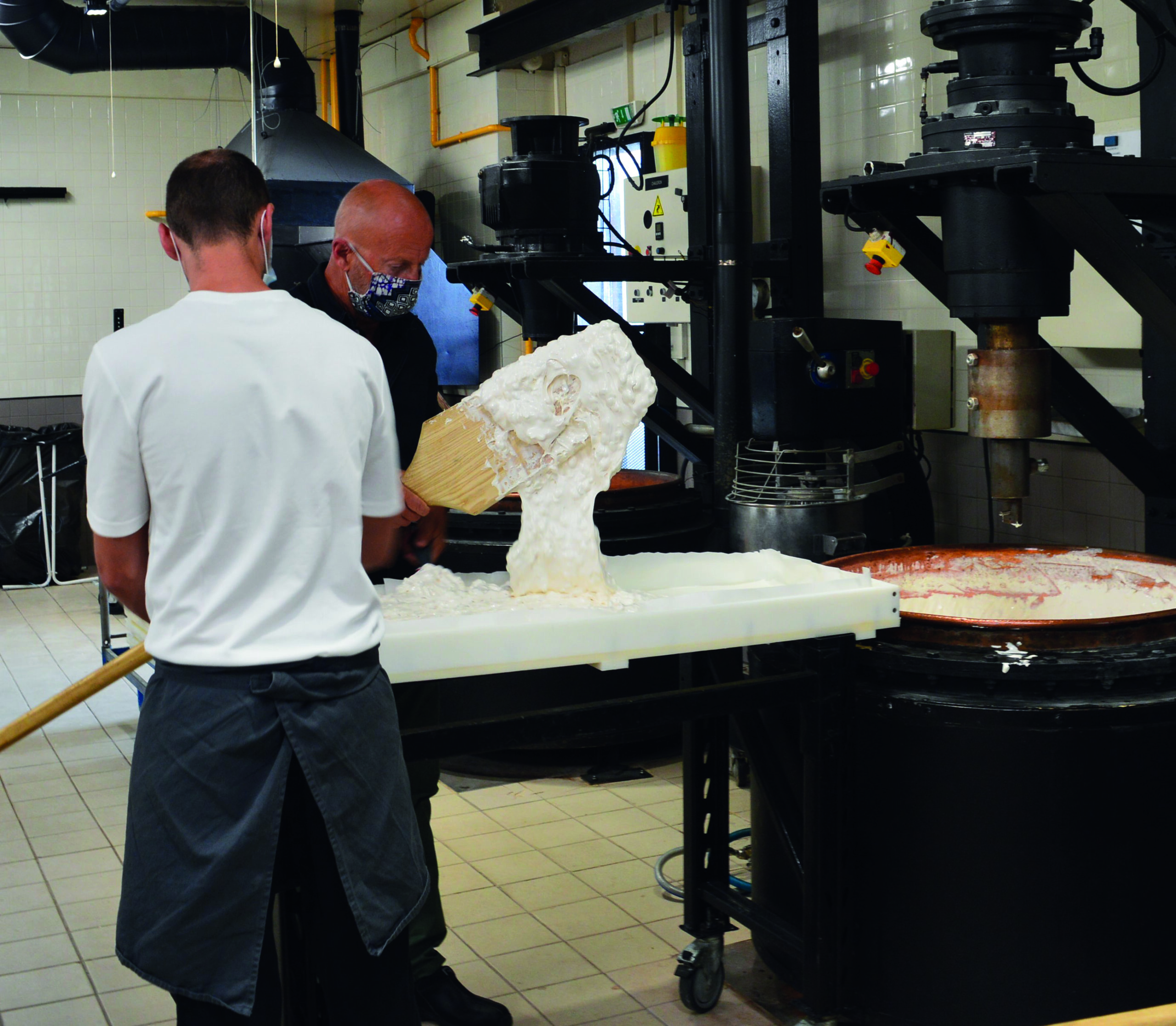
Quentin and Didier making nougat at Arnaud Soubeyran from France Today Magazine Issue 187
His brother, Thomas, owns a farm across the Rhône river, in the Ardèche, where he grows the almonds and makes the honey for the nougat. His mother, Caroline, created the Musée du Nougat at Arnaud Soubeyran, where visitors can find out about the history of nougat, plus the importance of bees in making it, with a hive on view, in addition to watching while confectioners make artisan sweets in giant copper cauldrons.
A valley of gastronomy
The museum and nougaterie is one of hundreds of foodie tourist attractions along the Vallée de la Gastronomie, a new touring route between Dijon and Marseille. At 620km long, it’s a lengthy journey, rich in regional specialties and as I’ve less than a week, I am limiting my palate to the département of the Drôme, on the left bank of the Rhône. Following my visit to Montélimar, I drive east amid fields of sunflowers to La Bégude-de-Mazenc. Here, on a hillside overlooking a wooded valley to Dieuleft, is L’Essentiel de Lavande, an organic lavender farm run by Odile Tassi. Odile, who is no stranger to lavender farming and essential oil production in the Drôme, bought the Provençal-style farm 12 months ago. The pale stone farmhouse sits pretty as a picture against a backdrop of slender truffe oak trees, a stumpy olive tree in the garden and a terrace of striped lavender fields.
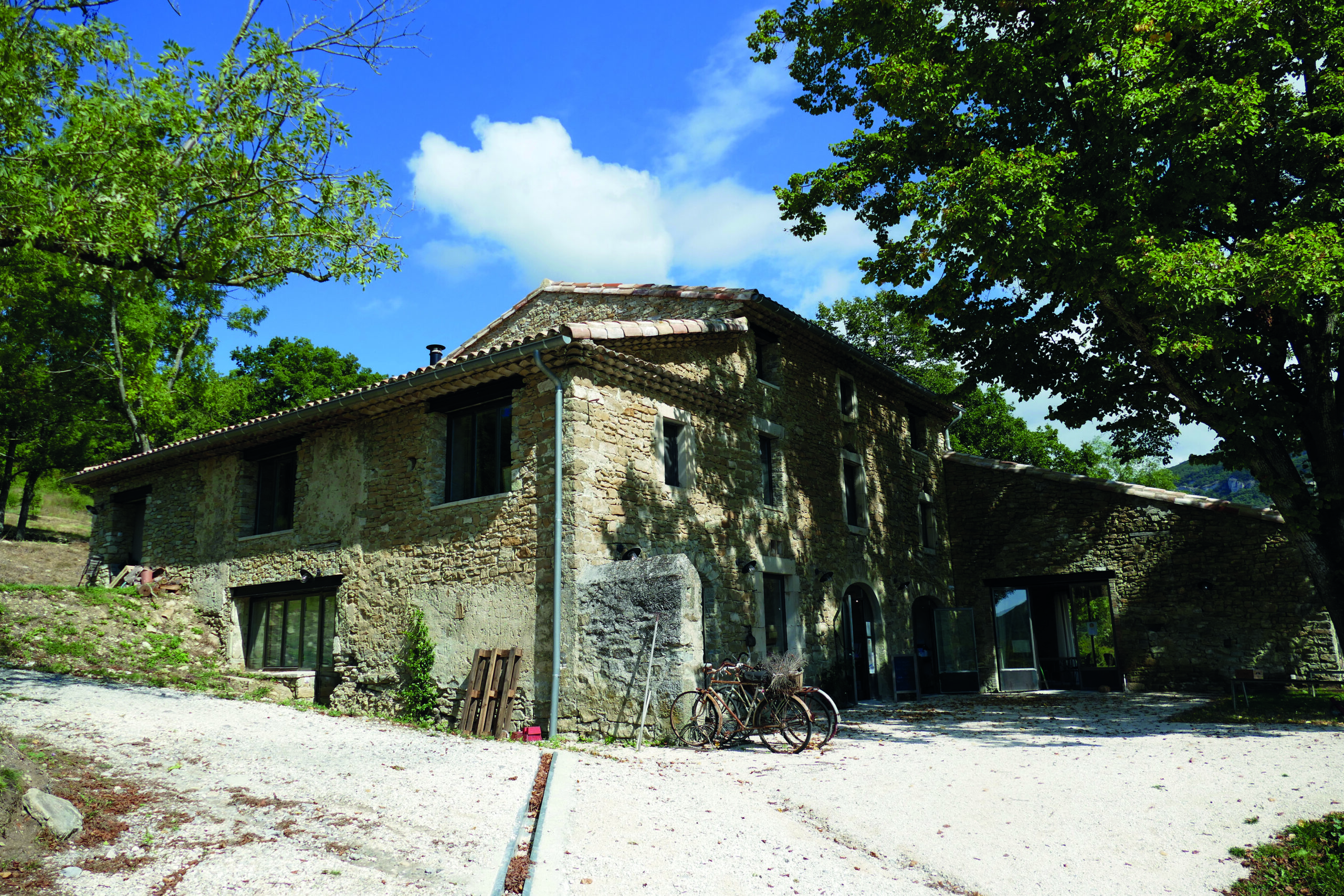
L’Essentiel de Lavande from France Today Magazine Issue 187
I sit on a wooden bench beside a large copper still in the shade of a huge oak as the different types of lavender are explained. It’s not easy to focus amidst the extraordinary beauty of the surrounding hills, rocky limestone outcrops and neighbouring lavender fields, but I soon learn that the true lavender plant (rather than the commercial lavandin), which grows at an altitude of more than 600 metres, is the only lavender that can be used for cooking.

Lavender valley from La Drôme Tourisme
After class, it’s lunchtime among the lavender fields, a tourist offering from the Vallée de la Gastronomie. There’s a choice of three picnic menus; my traditional picnic box features charcuterie and bread from the village, tapenade made with locally-grown olives, Picodon cheese, salad and caillette, pork meatballs which are a speciality of the Drôme and Ardèche.
It’s all washed down with an organic apricot juice made at a nearby fruit farm and, for dessert, an organic sorbet that’s made exclusively for L’Essentiel de Lavande, along with an almond and lavender biscuit made by Odile. The sorbet uses lavender and herbs from the farm. “The Drôme has more organic producers than any other département in France,” says Odile, a statement that’s borne out when I visit two local markets later on my tour. The lavender plants have long been stripped of their regal purple when I visit, but that doesn’t stop hand-sized butterflies from dive-bombing the fields as I leave to drive the 38km or so to the hilltop town of Montoison. On my short drive, I am met by views across the fertile Rhône valley to the mountains of the Ardèche: sunflowers, maize, fields of rust-coloured sorghum heads, strips of lavender and fruit orchards create a bounty of colour.
The oil bar
At Montoison, I meet Patrick Richard, the fourth generation to run Huilerie Richard, an artisan oil producer. Patrick’s great-grandfather set up the business in 1885 to make high-quality olive oil. Patrick tells me only four per cent of oil available to buy in France is French; the rest is from the EU. “Le Gel des Oliviers [the catastrophic frost in 1956], when all olive trees in the south of France died, devastated the olive market,” he explains. “We began olive oil production again in 1990 and then, in 2006, we created the mill here at Montoison to specialise in walnut, hazelnut and rapeseed oil.”
In addition, Huilerie Richard makes AOP olive oils from Nyons (in the Drôme) and Nîmes, plus Provence and Haute-Provence blends from a variety of groves.
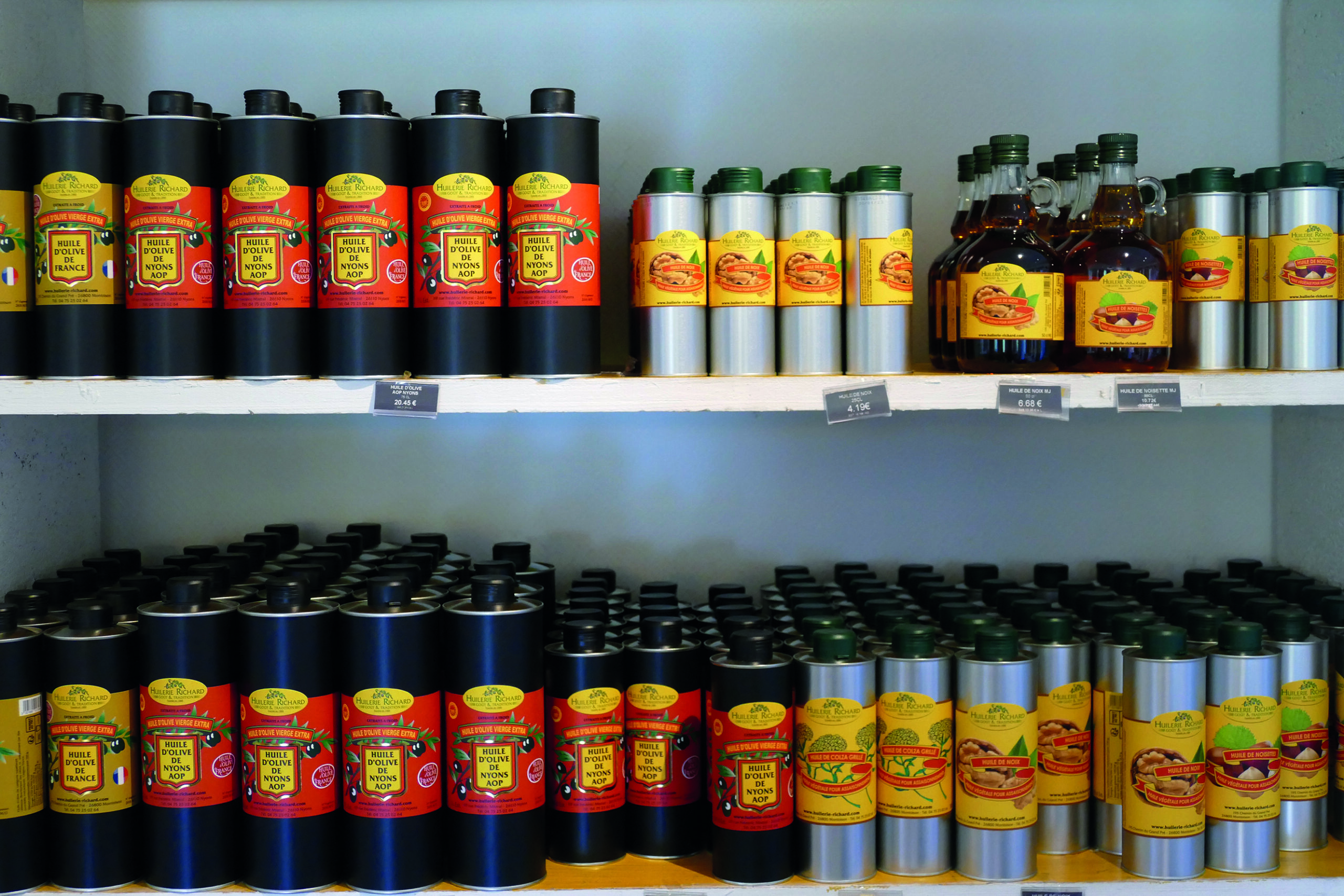
Olive and other nut oils at Huilerie Richard from France Today Magazine Issue 187
At the Oil Bar in the mill shop (one of the few places to buy the oils as they’re not available at supermarkets), I get to taste the subtle differences between the oils: Nyons’ oil is piquant, while Haute-Provence’s is milder, a rare cuvée from olive trees that didn’t succumb to the 1956 frost and which are more than 100 years old.
Further east, I stop in the medieval perched village of Beaufort-sur-Gervanne, which offers views of the Parc Naturel Régional du Vercors, a landscape of wooded hills and rocky limestone outcrops with sharp, pointed peaks. Inside the walls is an unpretentious community of bars, a barn-like boulangerie making only sourdough, and a village shop to rival the best organic food aisle of a supermarket five times its size.

Parc Régional Naturel du Vercors from France Today Magazine Issue 187
On the edge of the village, crossing the tumbling and glacial-blue River Gervanne to climb a narrow single-track road through spindly oak trees, is La Frigoulette chocolaterie. It was created by Bernard Xueref – a well-known figure in French organic agriculture – in his grandmother’s farmhouse. Organic vegan chocolates using only Fairtrade cacao beans from São Tomé are made here and, as I open the door, leaving the bewitching views of Beaufort behind, a waft of warm chocolate invigorates the senses.
Chocolatière Emilie, overalls on and hair wrapped in a scarf, deftly hands out samples to taste. These are a world apart from bland commercial bars – rich and punchy bites of dark chocolate imbued with locally produced ingredients such as fruits from the neighbouring farm and, unusually, black garlic.
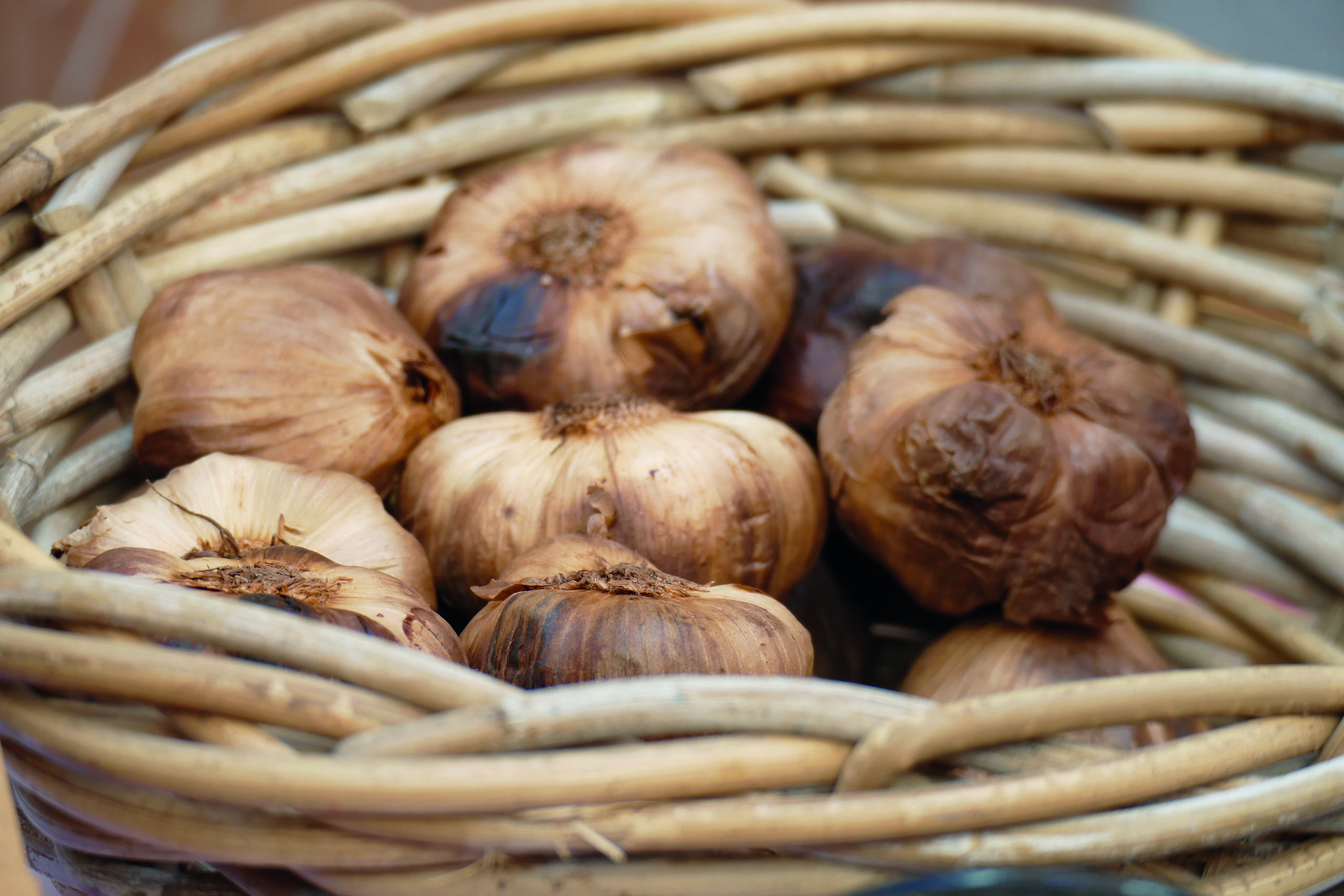
Black garlic from France Today Magazine Issue 187
GARLIC CHOCOLATE
“Garlic,” says Emilie, “is grown widespread across the Drôme. Black Garlic is a speciality of the département, where the bulbs are cooked on a very low heat for three weeks. Originally from the Far East, the result is not a garlic avour but something very sweet, which works well added to a bitter chocolate.”
It’s an ingredient that I find in the extensive Saturday morning market in nearby Crest. It’s heading towards midday by the time I arrive in the town, which straddles the River Drôme, and the streets are thronging with organic producers, mostly from nearby farms and one-man-band stallholders selling a basket of veg, their homemade syrups, tomatoes in every conceivable shape and colour, cheese, ravioles (also a speciality of the Drôme), honey and herbs. I discover a Drôme melon, sweet enough, I’m told, to rival those of Cavaillon, further south in Provence. It appears the entire town of Crest is gathered on the steps of the parish church, for a convivial chat in the sunshine.
As the bells chime 1pm, the official end of the market, stallholders celebrate a fine morning’s trading with a beer as empty boxes are packed away.
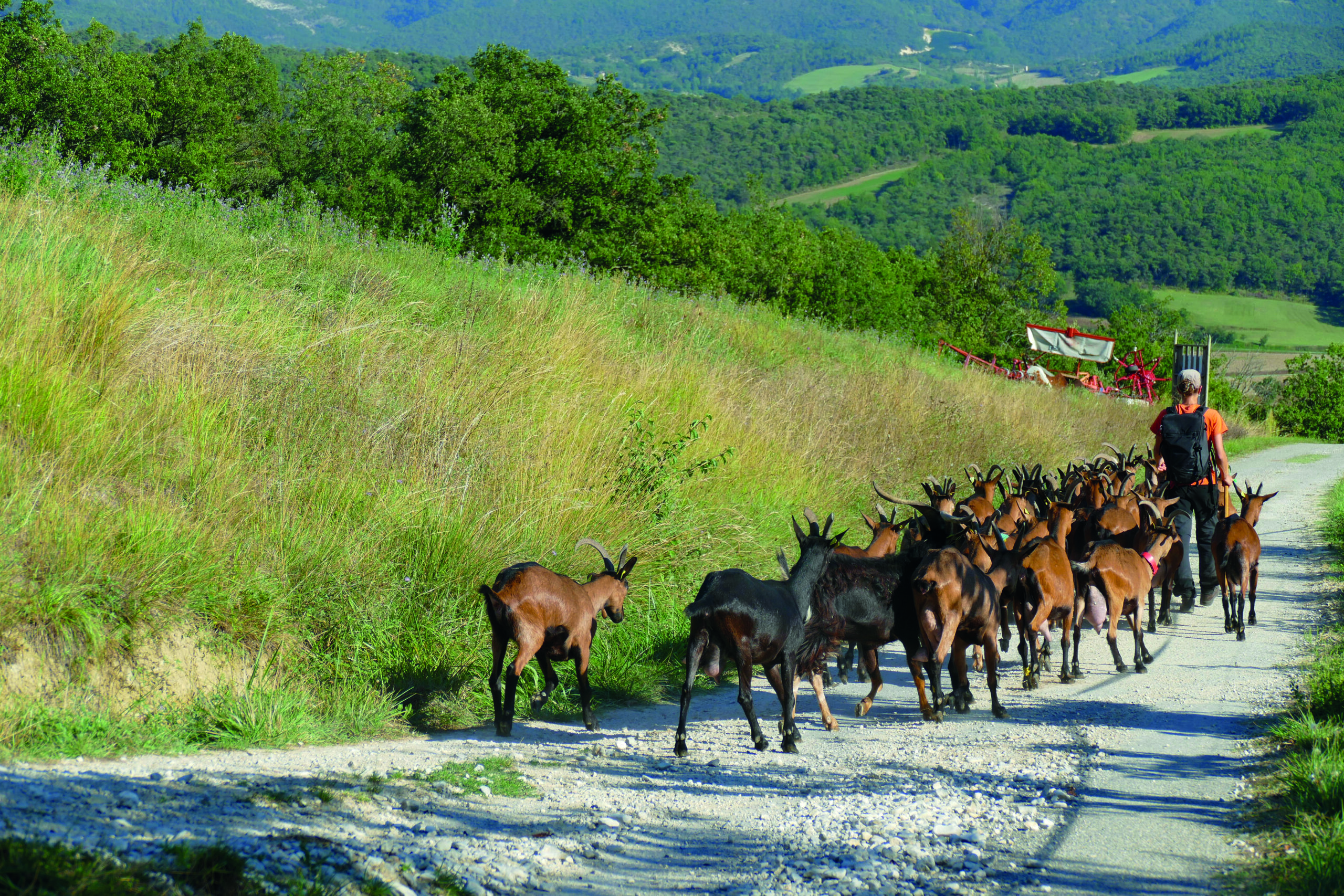
Goats that are used to make Picodon cheese from France Today Magazine Issue 187
While the Rhône valley is renowned for its vineyards, the Drôme has a notable and increasing collection of micro-breweries. I stop at Brasserie des Trois Becs, a modern farm brewery creating organic beers, on the outskirts of the tiny village of Lozeron. It produces all its own grains and grows its own hops, quite a rarity in France. Would that I could stay for a beer in the wildflower meadow brewery garden but I’m on my way to a goat farm in Suze. As I arrive at La Ferme de Saint-Pancrace, I’m greeted by a herd of goats trotting down the road towards me. The goatherd – the farm owners’ daughter – swiftly turns them into a field of alfalfa, where the goats munch away at the rich leaves under her watchful eye for a few minutes before returning to the milking parlour.
At the end of the parlour, Madame is selling Picodon cheese above the noise of the bleating goats. She presents me with a selection – one made in the last 24 hours, soft, squidgy and bright white, and four others progressively ageing; the oldest, at a fortnight, is pungent and definitely goaty!
BRIOCHE BY ANY OTHER NAME
I leave the Vercors behind and drive northwest, to Romans-sur-Isère, an elegant riverside town of upmarket townhouses with lacy balconies, which has an excellent Sunday morning market to rival that of Crest (and Valence, which also holds market day every Saturday). Like Crest, there’s much organic produce – arrive early to enjoy your pick of the excellent boulangerie stalls at their freshest.
In neighbouring Bourg-de-Péage, on the other side of the River Isère, is Pognes Pascalis, a boulangerie- pâtisserie famous for pognes, a type of brioche which is a speciality of the Drôme. Pognes can be found across the region, but Pascalis, which is now run by the fourth generation of the family, was where the orange-flavoured, ring-shaped brioche (the hole traditionally created with the baker’s elbow) was invented. In the basement is the Musée de la Pogne where you can learn more and enjoy a tasting.
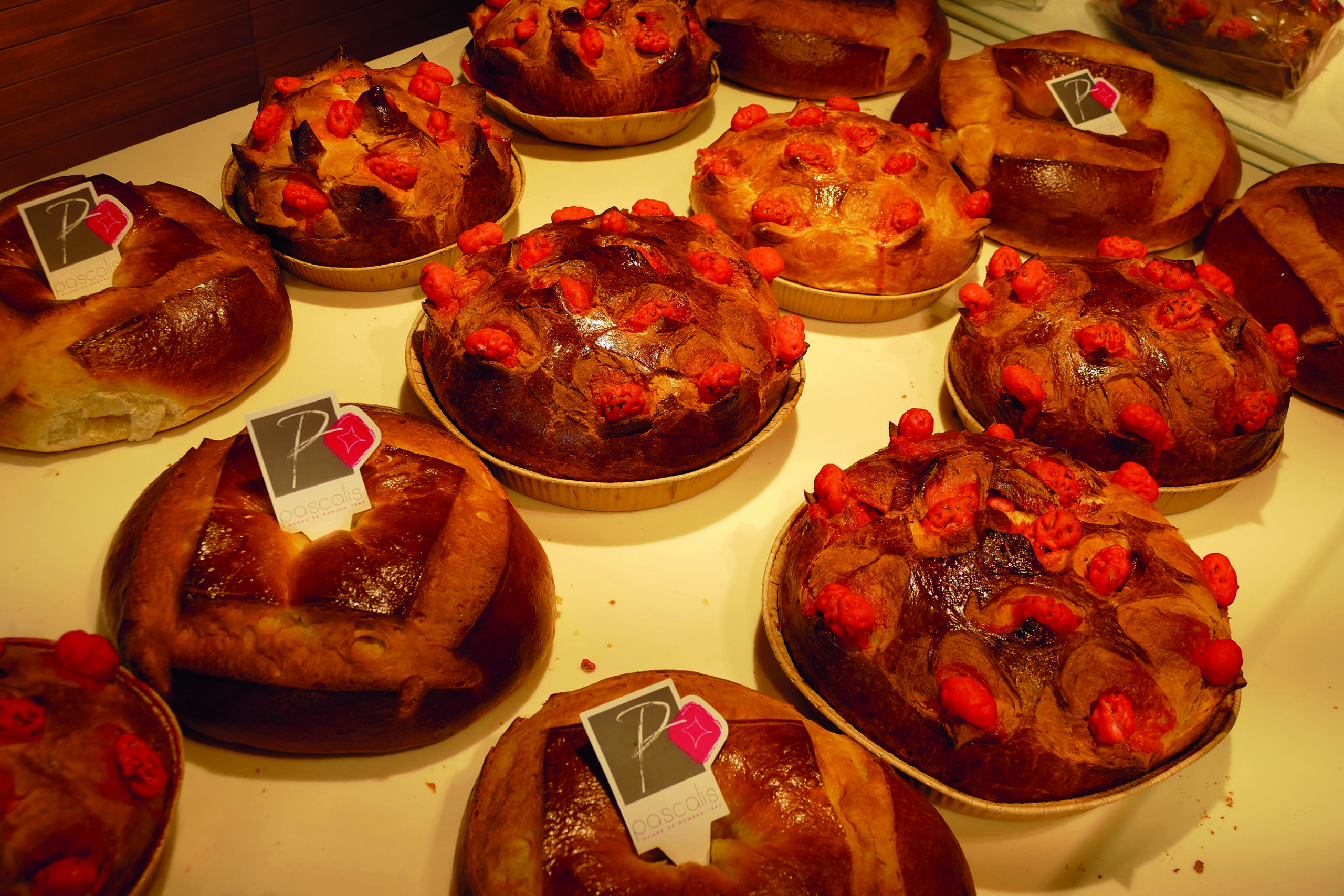
Pognes from France Today Magazine Issue 187
I head west, driving through orchards resplendent with colourful, ripening fruits, returning to the River Rhône to visit Tain l’Hermitage. My first stop is La Cité du Chocolat, a large tourist experience next door to and run by the legendary Valrhona, regarded by top chefs and pâtissiers as one of the finest chocolate brands in the world.
Upon arrival, visitors are greeted with a series of vending machines dispensing squares of chocolate used to learn how to taste. Here you can learn the history of chocolate, where it comes from, and view live cameras of the Valrhona production floor. It’s a slick and well-managed presentation and Le Labo Dulcey adds to the experience with skills workshops for children, families and adults.
HILLSIDE VINEYARDS
If the Rhône Valley is known for one thing, it’s Côtes du Rhône wine. Across town, at the foot of the Colline de l’Hermitage (which gives its name to the famous appellation, Hermitage) is the Cave de Tain, the cooperative winery for 270 vine growers in the region. It produces wines in five appellations, including Crozes-Hermitage, Cornas and Saint-Joseph.
Terres de Syrah, the wine tourism wing of the Cave de Tain, offers tourist experiences including Segway, e-scooter and off-road buggy tours of the vineyards, boat trips on the Rhône with food and wine tastings, and tours of the winery.
With a wine tasting at the Cave planned for my return, I take a 4km self-guided circular walking trail through the vineyards of the Hermitage and Crozes- Hermitage. Maps are available at the Cave de Tain, or guests can scan QR codes at information points along the way to learn more about the vines, the wines and the stunning vistas.
As I reach the top of the Colline de l’Hermitage, I pause to take in the view: the River Rhône stretches along the valley to the south; to the west are the hills of the Ardèche; in the east, faded grey, rise the mountains of the Vercors and the Baronnies; and directly below is the verdant plain of orchards, vineyards and farms. This truly is the Vallée de la Gastronomie.
From France Today magazine

Parc Régional Naturel du Vercors from France Today Magazine Issue 187
Want to be inspired by more French foodie experiences and enjoy classic French food, wine and recipes? Head to our sister website, Taste of France, here.
Lead photo credit : Vignobles and Tain l'Hermitage from La Drôme Tourisme
Share to: Facebook Twitter LinkedIn Email
More in Ardèche, Drôme, L’Essentiel de Lavande, Rhône
Leave a reply
Your email address will not be published. Required fields are marked *

